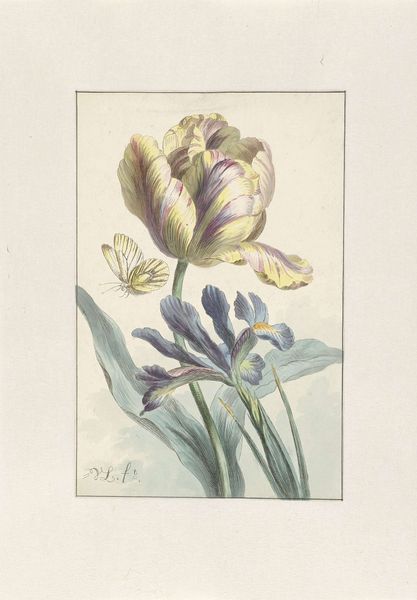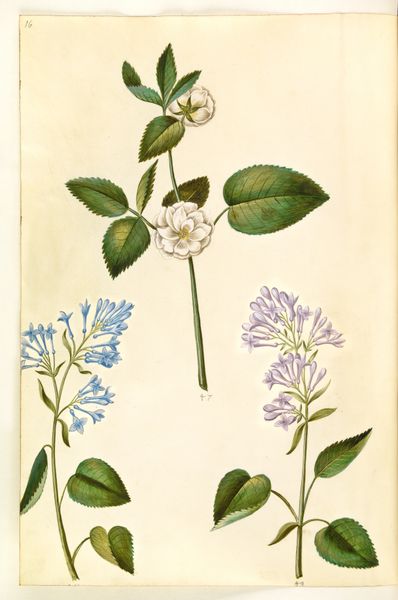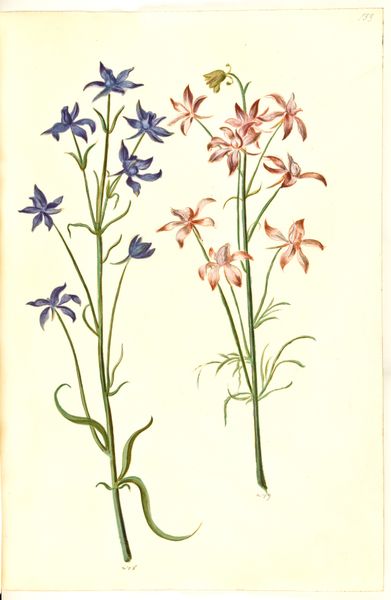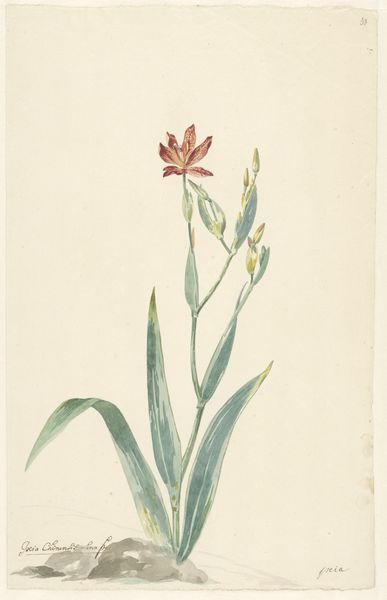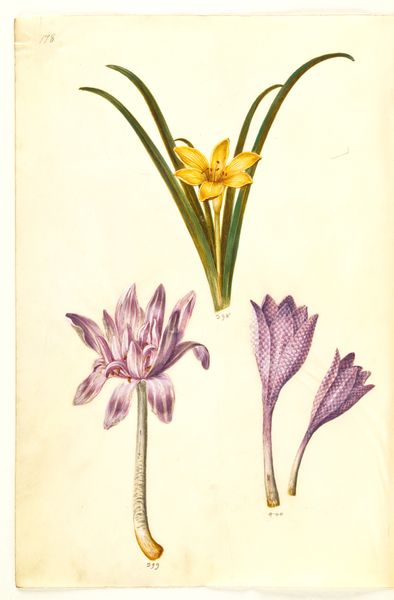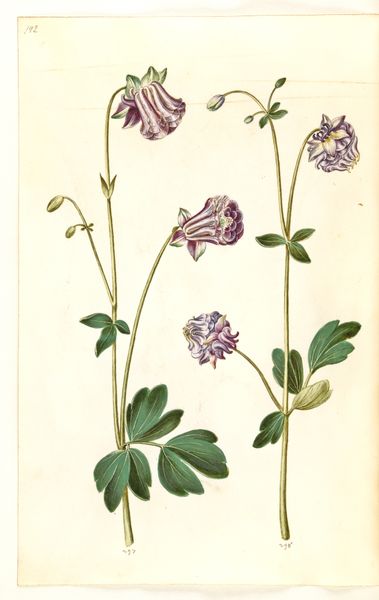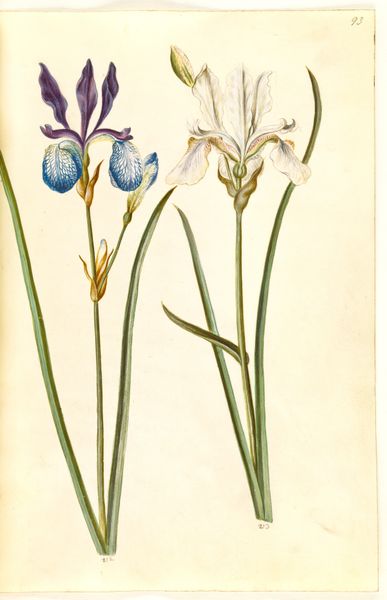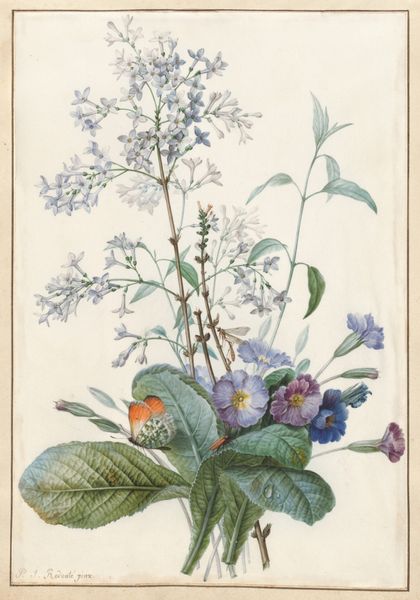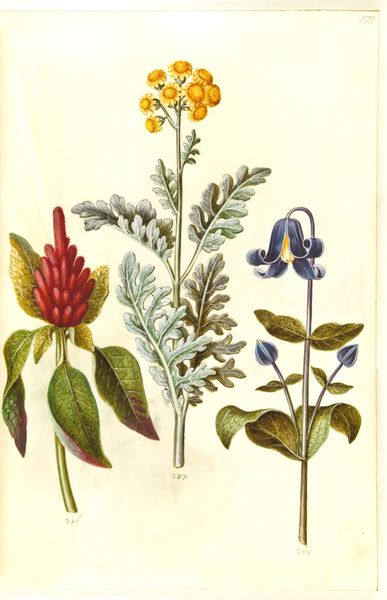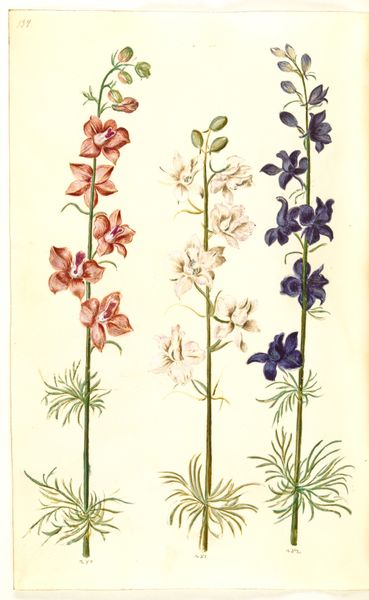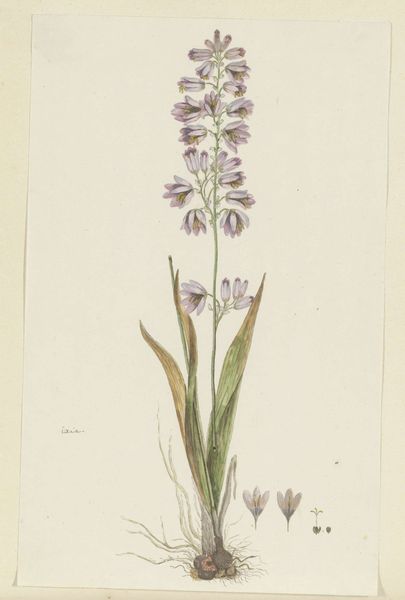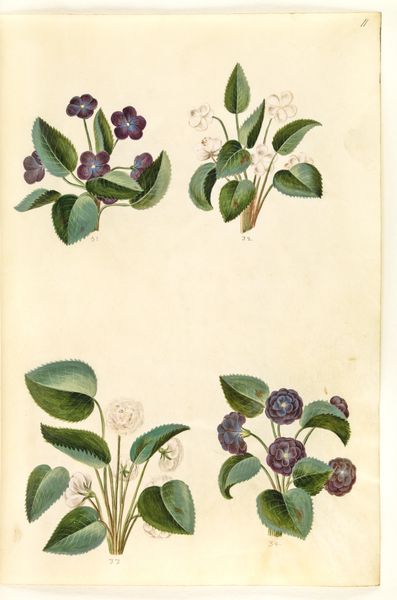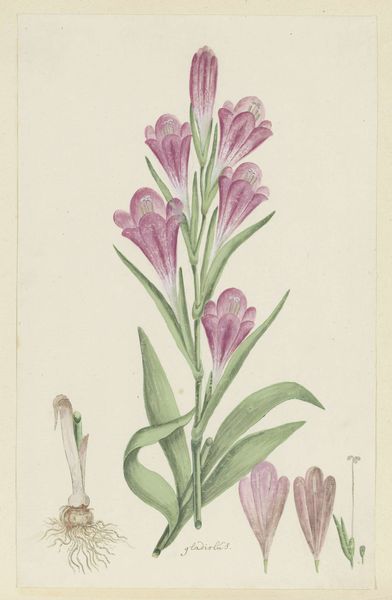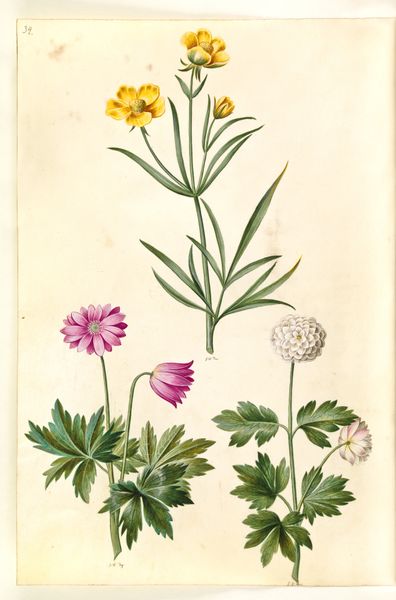
print, watercolor
# print
#
landscape
#
botanical illustration
#
watercolor
#
botanical drawing
#
united-states
#
watercolour illustration
#
academic-art
#
botanical art
#
realism
Dimensions: 9 5/8 x 4 3/4 in. (24.45 x 12.07 cm) (image)
Copyright: Public Domain
Editor: So, this lovely botanical and ornithological print is titled "Field Bunting," and was made between 1840 and 1844. It’s a watercolor and print work, currently at the Minneapolis Institute of Art. It has such a serene and quiet feeling. What do you see in this piece, beyond the pretty flowers and little bird? Curator: This image whispers of cultural memory, doesn't it? Look at the precise detail of the bunting nestled amongst the blossoming plants. It isn't just a pretty picture. These natural history illustrations became vital visual tools, particularly in the American context of westward expansion. They carried the weight of scientific exploration, a yearning to understand and categorize the vast, new landscape. Editor: So, you're saying it's less about art, more about documentation? Curator: Not necessarily. The choice of what to depict, how to depict it - those are conscious artistic decisions, imbued with the artist’s own perspective and cultural understanding. Notice how the bunting and surrounding foliage occupy the heart of the composition, surrounded by open space; it reminds us how we isolate and frame elements of the wild. Does that not strike you as interesting, particularly within the context of nineteenth century scientific discovery? Editor: That’s a good point! It’s like claiming ownership through observation, wouldn't you say? Curator: Precisely! This reflects humanity’s enduring quest to define and dominate nature. A quest depicted time and again through visual symbolism. We have sought knowledge and power, often subtly revealing psychological relationships through such illustrations. Editor: That’s fascinating. I’ll never look at botanical art the same way again. Thanks so much. Curator: My pleasure. These visual echoes of our cultural journey enrich the narrative, layering additional perspective within familiar imagery.
Comments
No comments
Be the first to comment and join the conversation on the ultimate creative platform.
